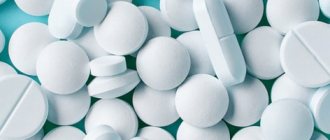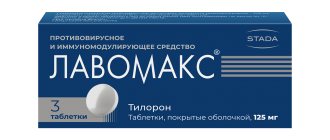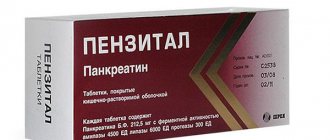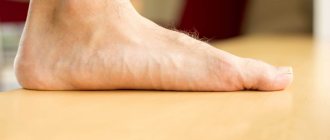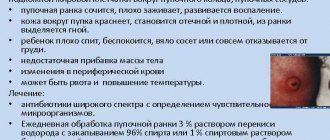Escherichia coli
Intestinal infection is a group of infectious diseases of a bacterial nature that affect the digestive tract, which are accompanied by dehydration, intestinal syndrome and general intoxication.
Increased levels of Escherichia coli are detected in the mucous membranes of the digestive tract in cases of intestinal diseases in newborns and nonspecific ulcerative colitis. Invasive strains of Escherichia are found in inflamed tissues, and the number of microorganisms is correlated with the severity of the inflammatory process in the intestines.
Acute intestinal infection is the second most common among all infectious diseases, second only to acute respiratory infections. Every year, more than 500 million people are diagnosed with this disease around the world.
Features of infection in women
According to statistics, escherichiosis is more often diagnosed in women of different ages, while pathogenic serotypes of bacteria are found in the lumen of the large intestine, in the vagina and urinary tract. If we talk about the causes of E. coli in the urine, then the following factors can provoke this phenomenon :
- Anatomically close location of the external opening of the urethra and the anus.
- Decreased immunity.
- Pregnancy.
- Failure to comply with the rules of personal hygiene and sexual hygiene.
- Inflammatory damage to the kidneys and urinary tract.
It is important to remember that treating symptoms of E. coli in the urine in women with folk remedies can result in the development of a severe infectious and inflammatory process in the kidneys and urinary tract.
Often, pathogenic strains of bacteria are found in a vaginal smear in women. If E. coli is detected in a woman’s smear, treatment includes not only the use of medications, but also a complete refusal to wear underwear made of synthetic materials, as well as a temporary refusal of unprotected intimacy.
The appearance of this microorganism in the urine of women during pregnancy is not uncommon. During pregnancy, under the influence of hormonal factors, a decrease in general immunity is observed, which creates favorable conditions for the penetration and reproduction of pathogenic microorganisms. If a pregnant woman develops symptoms of E. coli in her urine, it is recommended not to delay treatment, since escherichiosis can have serious consequences for both her body and the body of the developing fetus.
Causes of intestinal infection
The causative agents of the disease can be various pathogenic microorganisms, but most often Escherichia coli. Most strains of these gram-negative bacteria are harmless; they are part of the normal intestinal microflora and participate in the synthesis of vitamins and the formation of organic acids.
The disease is caused by virulent strains of Escherichia coli that enter the intestines from the outside. Possible causes of E. coli: consumption of infected vegetables and contaminated water, improper storage of food, insufficient heat treatment of meat, etc.
Infection is possible through dirty hands and any household items, including children's toys. This is why E. coli is most often diagnosed in a child. Young children, exploring the world around them, often put their hands and various objects into their mouths.
An intestinal infection can also be caused by:
- other gram-negative bacteria (for example, Shigella, Salmonella, Campylobacter);
- opportunistic organisms (clostridium, staphylococcus, Klebsiella, etc.);
- viruses (rotaviruses, coronaviruses, enteroviruses, toroviruses, adenoviruses, etc.);
- protozoa (for example, Giardia, blastocysts, amoebas).
In children
The most common cause of infection in childhood is the consumption of dirty vegetables or vegetables, as well as unsuitable drinking water. Infection of newborns can occur during artificial feeding through poorly washed dishes or formula. Unsanitary living conditions are another provoking factor for escherichiosis.
The disease is especially dangerous for infants. Active reproduction of pathogens is fraught with severe dehydration. There is a possibility of death. The incubation period lasts from several hours to eight days. The stool becomes liquid with a yellowish or even orange tint.
Vomiting, bloating, rumbling in the stomach, pain, and an increase in body temperature appear. Dehydration is indicated by dry skin and mucous membranes, rare urination, crying without tears, and weight loss. The child must comply with bed rest and dietary nutrition. Children under two years of age with moderate severity should be treated in a hospital setting.
Symptoms of E. coli
Once in the body, E. coli begins to actively multiply, causing the intestinal mucous membranes to become inflamed and digestive processes to be disrupted.
The main symptoms of E. coli in adults and children:
- gastrointestinal manifestations - diarrhea (profuse, watery, yellowish stools), flatulence, abdominal pain, nausea, decreased appetite, vomiting (in infants - frequent regurgitation), blood in the stool, weight loss;
- infectious-toxic signs: increased body temperature, weakness, lethargy, respiratory failure.
Diarrhea itself is potentially dangerous, especially for young children, because if it lasts for a long time, it causes dehydration and leaches vital elements from the body - potassium, calcium, sodium. Dehydration is manifested by increased thirst, sunken, dry eyes, decreased diuresis, dry mucous membranes and skin.
Symptoms
Signs of escherichiasis largely depend on which strains have affected the gastrointestinal tract (GIT). If the body is affected by enterotoxigenic bacilli, the symptoms of intoxication are mild. The disease occurs acutely with increasing weakness, fatigue and dizziness. At the same time, the temperature may even remain within normal limits. The abdomen is swollen, cramping pain is noted.
Symptoms of escherichiosis depend on which strain the body is infected with. The photo shows the main strains of pathogenic E. coli
Then diarrhea, nausea, and vomiting appear. Escherichiosis caused by enterotoxigenic bacilli is called cholera-like, since its manifestations are similar to the clinical course of mild cholera. If the disease is caused by enteroinvasive bacilli, general intoxication symptoms come to the fore. A person is worried about weakness, chills, headaches, and fever. After some time, cramping pain appears, as well as diarrhea mixed with blood and mucus.
Enteropathogenic eschirichiosis in newborns can become systemic in the form of sepsis. Enterohemorrhagic bacilli cause symptoms of enterocolitis. Loose stools with blood appear, as well as abdominal pain and tenesmus. The incubation period ranges from one to five days. Intestinal infection is characterized by an increase in symptoms of intoxication.
The main signs of the development of pathological activity of E. coli include:
- weakness and malaise;
- nausea and vomiting;
- diarrhea;
- feces become yellow;
- bloating;
- drowsiness and apathy;
- lack of appetite;
- pain in the navel area.
Gastrointestinal tract
Most often, E. coli affects the digestive tract. This manifests itself in the form of diarrhea up to ten to twelve times a day. Patients also experience a false urge to defecate. The feces take on a yellow appearance mixed with mucus and a small amount of foam. Usually the disease lasts from three to six days. Children under one year of age experience abdominal pain, increased gas formation, nausea, regurgitation, and drowsiness.
Infection with enterotoxigenic bacilli is also called traveler's diarrhea. Most often it bothers people who are in a different climate zone. The illness usually lasts only a few days and manifests itself in the form of diarrhea, pain in the stomach, fever, nausea, vomiting, lethargy, and headache.
urinary system
Pathogenic strains can enter the urinary system in several ways:
- failure to comply with personal hygiene rules. Pathogens can enter the vagina and urethra from the anus. Microorganisms can also spread from an inflamed vulva or vagina;
- upward path. The pathogen enters the upper sections through the urinary canals;
- hematogenous infection. Escherichia coli spreads through the circulatory system;
- lymphogenous pathway, that is, through the lymphatic vessels.
This may be caused by wearing tight-fitting underwear. As a result, the perineum sweats and pathogenic microorganisms easily move from the anorectal area to the vagina or perineum. Anal sex is another cause of infection. If the penis first penetrates the anus and then the vagina, it thus transfers microflora from the urinary system to the genital area.
Experts also identify unfavorable factors that contribute to urine retention in the kidneys or bladder: strictures, stenoses, and tortuosity of the urethra. This also includes the period of pregnancy, when the enlarged uterus puts pressure on the bladder.
Cystitis caused by Escherichia coli is manifested by the following symptoms: frequent urination, a feeling of incomplete emptying of the bladder, pain in the lower abdomen, a burning sensation during urination. White flakes and sediment will appear in the urine, and it will acquire an unpleasant odor. Blood is also often found. Patients complain of general malaise, weakness, and fever.
Nausea and vomiting may occur. Treatment of E. coli largely depends on which part of the urinary system was affected, as well as what form and course the pathological process took. To combat the disease, antibiotics, uroseptics, vitamins, analgesics, and antipyretics are used.
In a throat swab
Patients are bothered by sore throat and constant sore throat. Treatment includes the use of antibiotics and diet. Fermented milk products must be included in the diet.
In a smear from the cervical canal
E. coli enters the cervical canal from the intestines after defecation. In the absence of proper hygiene and frequent wearing of synthetic underwear, the risk of infection increases significantly. A woman may not be aware of infection by microorganisms for a long time. And the first symptoms may be perceived as manifestations of thrush. The bacteria cause itching, irritation and redness of the vulva and vagina.
Diagnosis of Escherichia coli
At the first consultation, the doctor finds out the possible source of infection (water, food, etc.) and the intensity of clinical symptoms, evaluates the epidemiological history of the disease and hemodynamic parameters. Assessing the degree of dehydration of the body is of great importance, especially in children, since the amount of fluid lost largely determines the severity of the intestinal infection.
The main diagnostic test is bacteriological culture. The research material can be feces, urine, smears from the surface of the genital organs. It is placed in a certain nutrient medium, where Escherichia reproduces well, and later the number of colonies formed is counted. The same colonies that were grown are tested for sensitivity to antibiotics.
To confirm the diagnosis, other laboratory tests can be carried out: coprogram, PCR, general urine and blood tests, urine culture, serological tests, etc.
In case of a generalized form of intestinal infection, culture of blood, cerebrospinal fluid and urine is carried out.
Differential diagnosis is carried out to exclude diseases such as food allergies, acute appendicitis, intestinal obstruction, pancreatitis, lactase deficiency, Crohn's disease, biliary dyskinesia. If necessary, the patient is referred for consultation to a gastroenterologist.
Treatment of E. coli
E. coli in a child under 5 years of age is a reason for hospitalization.
Therapy for intestinal infections is always comprehensive, aimed at eliminating the etiological agent, rehydration, restoring water and electrolyte balance, removing accumulated toxic products and eliminating the symptoms of the pathological process.
To eliminate pathogenic bacteria, patients are prescribed antiseptic and antibacterial drugs for E. coli: furazolidone, kanamycin, gentamicin.
To correct the water-electrolyte balance, glucose-saline solutions are used, which are prepared from Regidron and Trihydrosol powders and taken orally. If the patient is in serious condition (oral administration of the drug is not possible), infusion therapy is carried out with solutions containing glucose and electrolytes.
To normalize digestive processes, enterosorbents are used - Smecta, Activated carbon, Sorbex.
If indicated, bacteriophages are used - salmonella, coliproteus, dysentery, etc.
A diet is a must. Until vomiting and diarrhea subside, a break in nutrition (water-tea break) is recommended. Next, therapeutic nutrition will be organized. In each case, the doctor selects the diet individually depending on the severity of the infectious process, the nature and severity of intestinal dysfunction.
Possible complications
With a decrease in immunity and poor hygiene, the stick can enter other organs and contribute to the development of concomitant diseases: dysbacteriosis, enterocolitis, pyelonephritis, sepsis, meningitis.
In women, against the background of an intestinal infection, adnexitis, colpitis and bladder infections can occur. E. coli is especially dangerous during pregnancy, since the disease is fraught with intrauterine infection in the fetus and postpartum endometritis in women.
When Escherichia coli enters a man's urethra, it can cause urethritis, inflammation of the testicles, and prostatitis.
Some types of this bacterium cause peritonitis, hemolytic-uremic syndrome, and pneumonia.
Without timely treatment, E. coli causes colitis, gastritis, and pancreatitis. Severe dehydration, especially in children, is fraught with hypovolemic shock and acute renal failure.
The generalization of the pathological process is also dangerous - it can be complicated by pulmonary edema, sepsis, disseminated intravascular coagulation (increased thrombus formation and bleeding disorders), acute heart failure.
